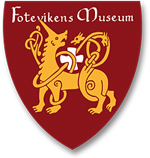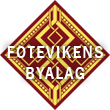Foteviken during Ancient times
History around Foteviken
The Viking Town of Fotevikens museum is located in an exciting cultural area with traces of human settlement ranging back to the Stone Age some 6000 years ago. The map of the Öresund coast south of Malmö below has all visible and registered stationary remains marked. Only finds from the coast to about a kilometre inland are marked. Foteviken is the small bay located just north of Stora Hammar village.

Ancient times around Foteviken
The map below, dating back to around 1811, shows sites where archaeological finds has been made from before the Viking Age, i.e. before 800 AD.
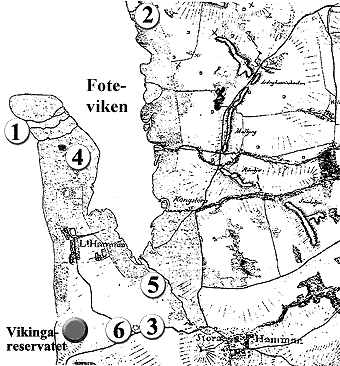
-
Stone age settlements below the sea
At extreme low tide and during times not disturbing the local birl life you may walk far out into the water by Lilla Hammar isthmus and literally feel the Stone Age beneath your feet. Roughly 5000 years ago this was the site of a settlement, the water level was a lot lower at the time. If you are lucky you may step on flint tools and get historical cuts in your feet!
Out in Ă–resund, at about 7 meters below sea level, there are several settlement fron about 5000 BC. The sea level of the sound was so low at the time that several large islands were located here, among others at the current so called Lillgrundet (Small shallows) a few miles to the north.
-
The mound at Eskilstorp
By the coast, a mere stones throw from Öresund, a so called stone mound from about 4000 BC is located. A burial mound is a grave chamber made from large standing stones covered by a large ceiling slab. The stones were once encased in a mound of soil, but this is gone today at the Eskilstorp mound. On Söderslätt several other such mounds can be found, the strangest being the double mound at Snarringe just east of Skegrie village, about a mile east of the Viking Town.
Bruzelius writes about the Eskilstorp mound in 1870:
"On the beach of the cavaily craptain estate in Eskilstorp stands a considerable stone mound located not far from the sea. Yet in living memory it was provided with surrounding stones, but these were destroyed by the priest farmers to whose homestead it belonged to at the time. Now, as the drawing shows, only the coffin and its lintels remain, which is made up of a considerable stone slab, flat on the under side, roughly 2 ells thick and about 4 ells across on all sides. Its size notwithstanding it is cracked in two fairly different parts.The coffin, 3 ells long and 2 1/4 wide, consists of three, on the inside flat, stones, but completely open on the northeast side. The northern lower lintel is 3 ells wide, 1/2 ell thick in its thickest part, and the inside 2 1/6 ells above ground, and cracked, likely by the pressure of the lintel above. The southern stone is 3 ells wide, 3 quarter thick and 1 3/4 ell tall inside the coffin, whereby the upper lintel has gained a not insignificant lean toward the southern side and the coffin is thus far lower there."
-
Kungshögen
South of Foteviken lies a Bronze Age burial mound traditionally called "Kungshögen" (the King's Mound). It is especially characterized by its content. In this mound the National Heritage Board chairman Osca Montelius made a sensational discovery in 1890.
The mound at Foteviken is 22 meters across and five meters tall. Montelius found five graves within the mound. A younger grave was found in the upper part, another was located in a small cairn at the ancient ground level and three graves were dug beneath the mound.
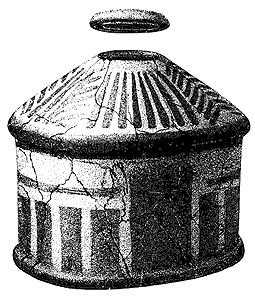
The grave beneath the mound was the most interesting. The dead body has been cremated and the bones placed in a house shaped urn. These so called house urns have been found at several sites in Scania, but the unique thing about the Foteviken urn is that it is the only one with painted decor in black and yellow. Thanks to the painting you can easily imagine the building that the urn was modeled after.
Inside the urn, alongside the burned bones, a bronze knife, bronze awl and a so called double button of bronze was found. Thus no really remarkable finds, objects fairly commonly found in graves from the younger Bronze Age. The painted urn on the other hand was clearlu inspired by objects found south of the Alps.
Since this grave appears to have been the first on the site, created under a small cairn that was added to at later burials, we may have a weak but interesting indication that Foteviken has a very long history as a site for international trade.
-
Lilla Hammar isthmus grave field
Just north of Fotevikens Museum and Lilla Hammar village, at the tip of the narrow isthmus between the bays of Höllviken and Foteviken, one of the largest Iron Age grave fields in Scania is located. No less than 141 skeletal graves have been found.
It all started in 1931. A building contractor bought the land to build a gravel pit. Immediately skeletal remains were found, lying very shallow under the land mixed soil layer covering the isthmus. The archaeologist Folke Hansen was called in and during four summers he and his helpers dug out the graves.
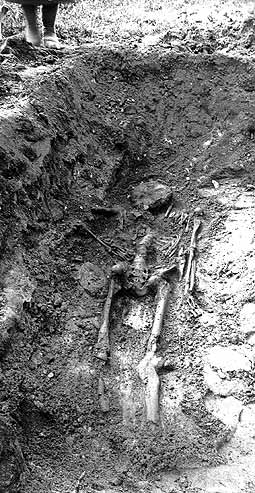 One of many skeletal graves at the Lilla Hammar isthmus grave field. Despite being one of the largest antiquities of its kind in Scania further excavations have not been made since the 1930s.
One of many skeletal graves at the Lilla Hammar isthmus grave field. Despite being one of the largest antiquities of its kind in Scania further excavations have not been made since the 1930s.
Foto from LUHM:s archive.During spring of 1935 a desperate excavation leader can be found in the news press. The money the National Heritage Board has contributed had only been grants from so called "travel order" and funds for further excavations could not be granted:
"If anything else is to be done it must happen this summer. After that it will be too late. The building contractor cannot be blamed that five graves were destroyed, like last spring, as regrettable as that is."
Though the active Folke Hansen managed to get private contributors to provide funds to continue excavations. The following year he thusly could sum up a very successful excavation project of one of Scania's most interesting Iron Age grave fields:
"This year's excavation is focused to areas to the west and east of the previously examined site. The western side holds graves with beautifully ornamented clay pots, combs and beautiful mosaic pearls, while the eastern side, where extensive burials have taken place, only holds poorly burned clay pots, the odd pearl and simple iron objects. Everything points toward that the grave field has been in use throughout several centuries, likely from the start of of the first century AD and all the way until the end of the pagan times."
Folke Hansen also notes that he by the summer 1936 has examined such a large area around the gravel pit that the activity there is unlikely to ruin any more important remains for many years to come:
"What remains of the mighty grave field I hope will be left for coming ages."
Thus this grave field by Ă–resund was mostly forgotten.
-
Settlement by the crossroads
At a cable digging some years ago the archaeologists found several remnants of buildings north of the main road to Vellinge. Here, by the stream that ran from the Stora Hammar medieval village to the Foteviken bay, are also cultural layers, i.e. waste layers from the Iron Age, about 1500 years ago.
-
Settlement at Foteviken
At the construction of a large shopping centre with parking lots by the first roundabout north of Höllviken village numerous pole holes after several longhouses were found, along with other remnants of settlement from the centuries around the birth of Christ.
